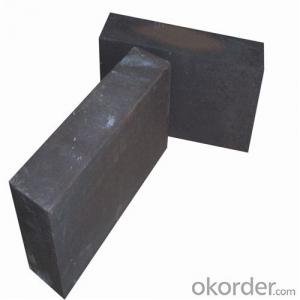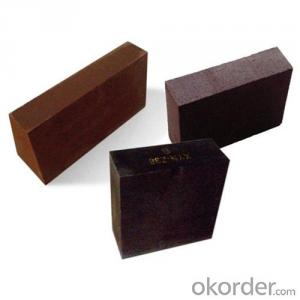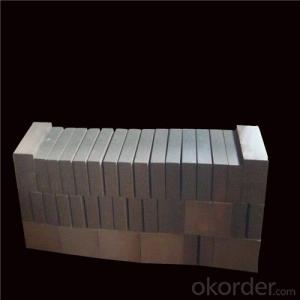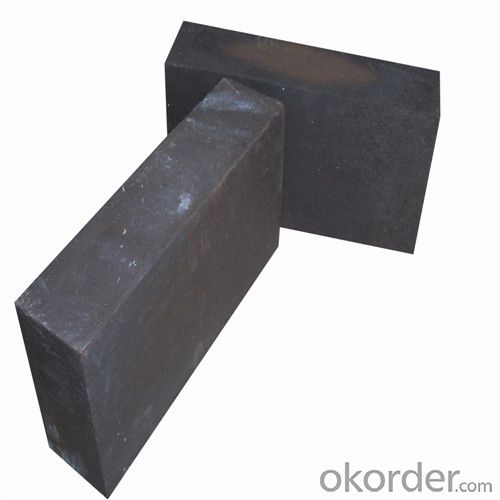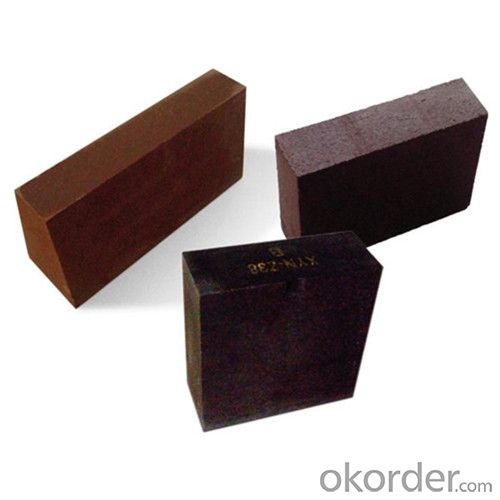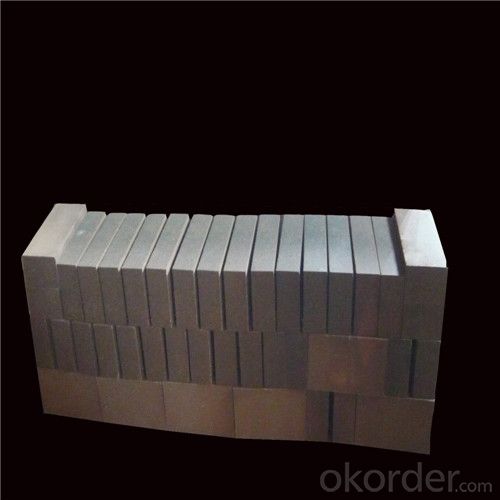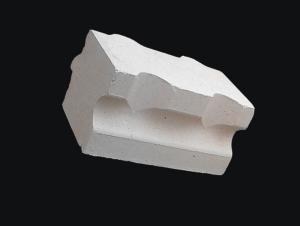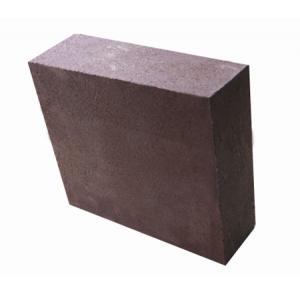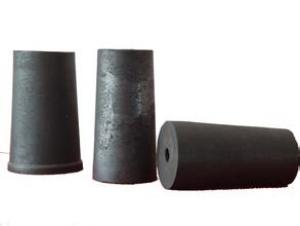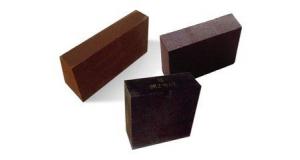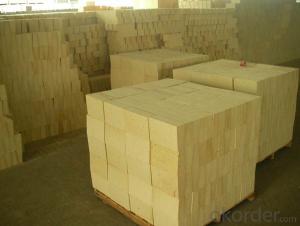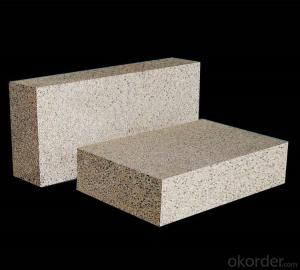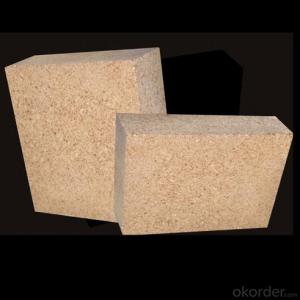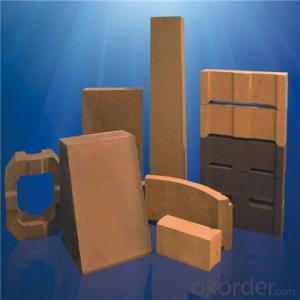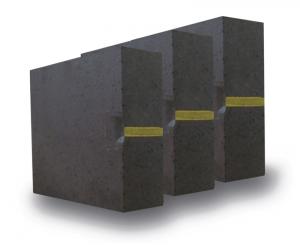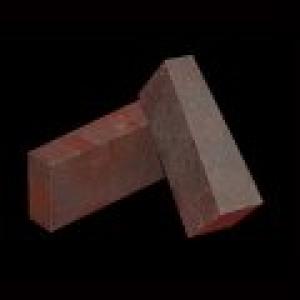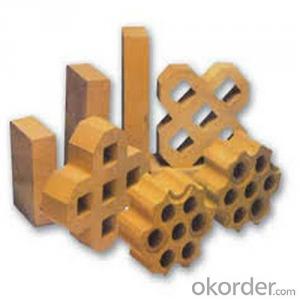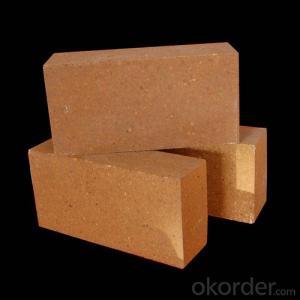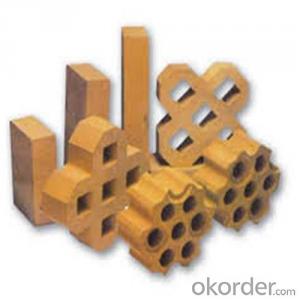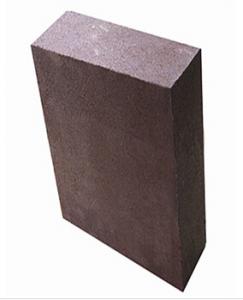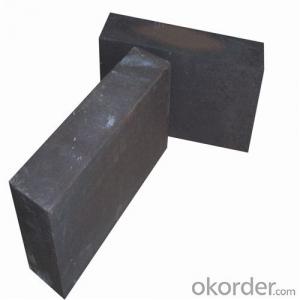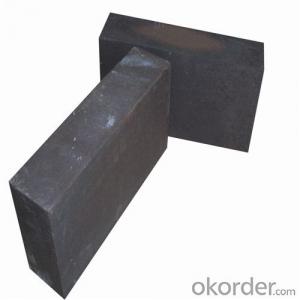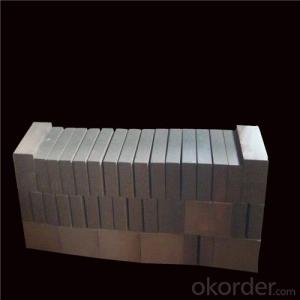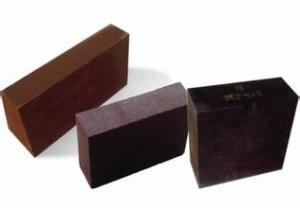Magnesite Chrome Brick - High Temperature Changes
- Loading Port:
- Shanghai
- Payment Terms:
- TT OR LC
- Min Order Qty:
- 100 pc
- Supply Capability:
- 2000000 pc/month
OKorder Service Pledge
OKorder Financial Service
You Might Also Like
General Information of Magnesite-Chrome Brick
l CMAX magnesite-chrome brick is made of high quality magnesia and chrome ore.
l CMAX direct-bonded magnesite-chrome brick is made of low impurity chrome ore and high purity magnesia and sintered at high temperature over 1700℃.
l CMAX semi-rebonded and rebonded magnesite-chrome bricks are made partially or fully of synthetic fused clinkers. Magnesite-chrome brick are shaped under high pressure and sintered at very high temperature.
Image of Magnesite-Chrome Brick
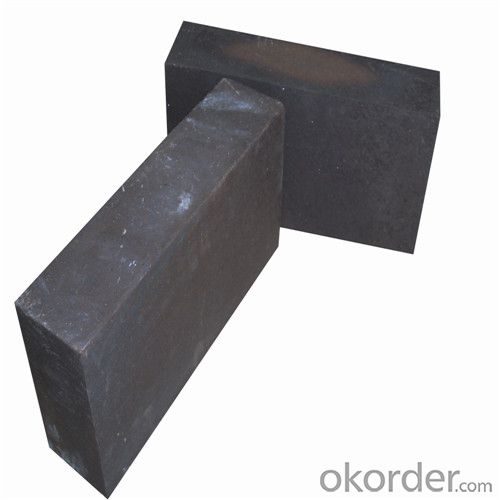
Feature of Magnesite-Chrome Brick
Good high-temperature performance
High thermal shock resistance
Strong slag resistance
High mechanical strength
Application of Magnesite-Chrome Brick
Cement rotary kiln
Non-ferrous furnace
Technical Data of Magnesite-Chrome Brick
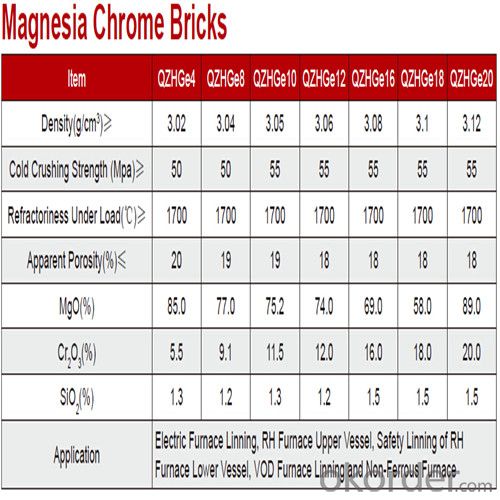
FAQ
Q1: How do you control the products quality?
A1: With strict quality control system throughout the materials selection and production process, our refractory and ceramic fiber products quality is effectively controlled to meet customer requirements.
From the raw materials selecting, our quality control begin. The quality certificates of raw materials are required and each batch will be tested before using. During production, the quality control are conducted by workers and then each piece will be sorted and examined by quality supervis
Q2: What`s the lead time for my order?
A2: It depends on customers’ requirements and our production schedule. And usually we need 30-60 days for refractory bricks,10-25 days for unshaped refractory materials and 10-20 days for ceramic fiber blankets.
Q3: Can you offer Door-to-Door delivery?
A3: Yes, but only for some countries such us U.S., UAE, Saudi Arabia, Iran, and Russia, etc.
Q4: What is the minimum quantity?
A4: There is no minimum order quantity. Depending on the item and processing, there may be a minimum production required, however we can offer a quotation based only on the quantity you need.
- Q: What are the differences between magnesium chrome bricks, such as direct bonding, re bonding, semi bonding, CO sintering and chemical bonding? Hope expert advice..
- Direct bonded magnesia chrome brickThe loose effect caused by the expansion of spinel when the oxide of magnesia brick is directly reacted with the oxide of iron can also be used to make magnesia chromite brick with synthetic common sintered material. In addition, there are non burned magnesia chrome bricks, for example, non burned magnesia chrome bricks combined with inorganic magnesium salt solutions. The unfired magnesia chrome brick has the advantages of simple production process, low cost and good thermal stability, but the strength of the high temperature is far less than that of the burnt brick. In the late 50s, a so-called "direct bonding" magnesia chrome brick was developed. The characteristics of this brick raw material is pure, high firing temperature, periclase and spinel phase with high temperature directly, silicate and other low melting point phase for island distribution, therefore, significantly improve the high temperature strength and slag resistance of brick.
- Q: Process for producing magnesia chrome brick
- The fine powder compacts after calcination produced by magnesia - chrome ore grinding method, brick with magnesia coarse particles, are effective measures to eliminate the effect of loose. Compared with the common magnesia chrome brick, the magnesia chrome brick made by this method has lower porosity, higher compressive strength, higher softening temperature and higher flexural strength. Compacts with chrome magnesite powder, magnesia chrome brick by synthetic magnesia chrome sand made of high-temperature calcination, slag resistance and high temperature strength are better than other magnesite chrome brick.In addition, magnesite brick and electric arc furnace melting magnesium chromium material by direct casting (see Figure microstructure, color), fused magnesia chrome brick material produced by the process of melting particles combined with magnesia chrome brick etc..
- Q: Refractory brick, high alumina brick, magnesia chrome brick, magnesia brick, clay brick, which type of high temperature refractory brick?
- High alumina brick clay brick up to 1700 degrees above 1500 degrees -1750 degrees of magnesia brick and magnesia chrome brick 1500-1650 degrees.
- Q: What are the environmental hazards of magnesia chrome refractory bricks?
- Magnesia chrome brick with MgO and Cr2O3 as the main component of this kind of brick, high refractoriness, high strength, anti alkaline slag corrosion resistance, excellent thermal stability, has certain adaptability in industry wide application of now high temperature acid slag
- Q: Magnesia chrome brick
- The fine powder compacts after calcination produced by magnesia - chrome ore grinding method, brick with magnesia coarse particles, are effective measures to eliminate the effect of loose. Compared with the common magnesia chrome brick, the magnesia chrome brick made by this method has lower porosity, higher compressive strength, higher softening temperature and higher flexural strength. Compacts with chrome magnesite powder, magnesia chrome brick by synthetic magnesia chrome sand made of high-temperature calcination, slag resistance and high temperature strength are better than other magnesite chrome brick.
- Q: How many kinds of refractory bricks are there?
- High aluminum brick: Al2O3 content more than 75 higher than that of the refractory clay brick, anti corrosion resistance, suitable for cement kiln etc., long service life, but high price.
- Q: Magnesium chrome brick price?
- In the brick factory products are now sold throughout the country and exported to the United States, South Africa, India, Germany, Canada, Ukraine, Japan and other countries, has been recognized and highly refractory materials in the world market.
- Q: What is a half combination of magnesia chrome bricks?
- Semi - combined magnesia chrome brick is a kind of refractory product made from partly fused magnesia chromite sand.
- Q: With different capacitance magnesia brick brick
- Fused magnesia brick brick has compact structure, high mechanical strength,
- Q: What are the main raw materials of magnesia chrome bricks?
- Magnesium alloys are alloys based on magnesium and other elements. Its characteristics are: small density (1.8g/cm3 magnesium alloy or so), high specific strength, high modulus of elasticity, good heat dissipation, good shock resistance, greater impact load capacity than aluminum alloy, good resistance to organic and alkaline corrosion. The main alloying elements are aluminum, zinc, manganese, cerium, thorium, and a small amount of zirconium or cadmium.
Send your message to us
Magnesite Chrome Brick - High Temperature Changes
- Loading Port:
- Shanghai
- Payment Terms:
- TT OR LC
- Min Order Qty:
- 100 pc
- Supply Capability:
- 2000000 pc/month
OKorder Service Pledge
OKorder Financial Service
Similar products
Hot products
Hot Searches
Related keywords
